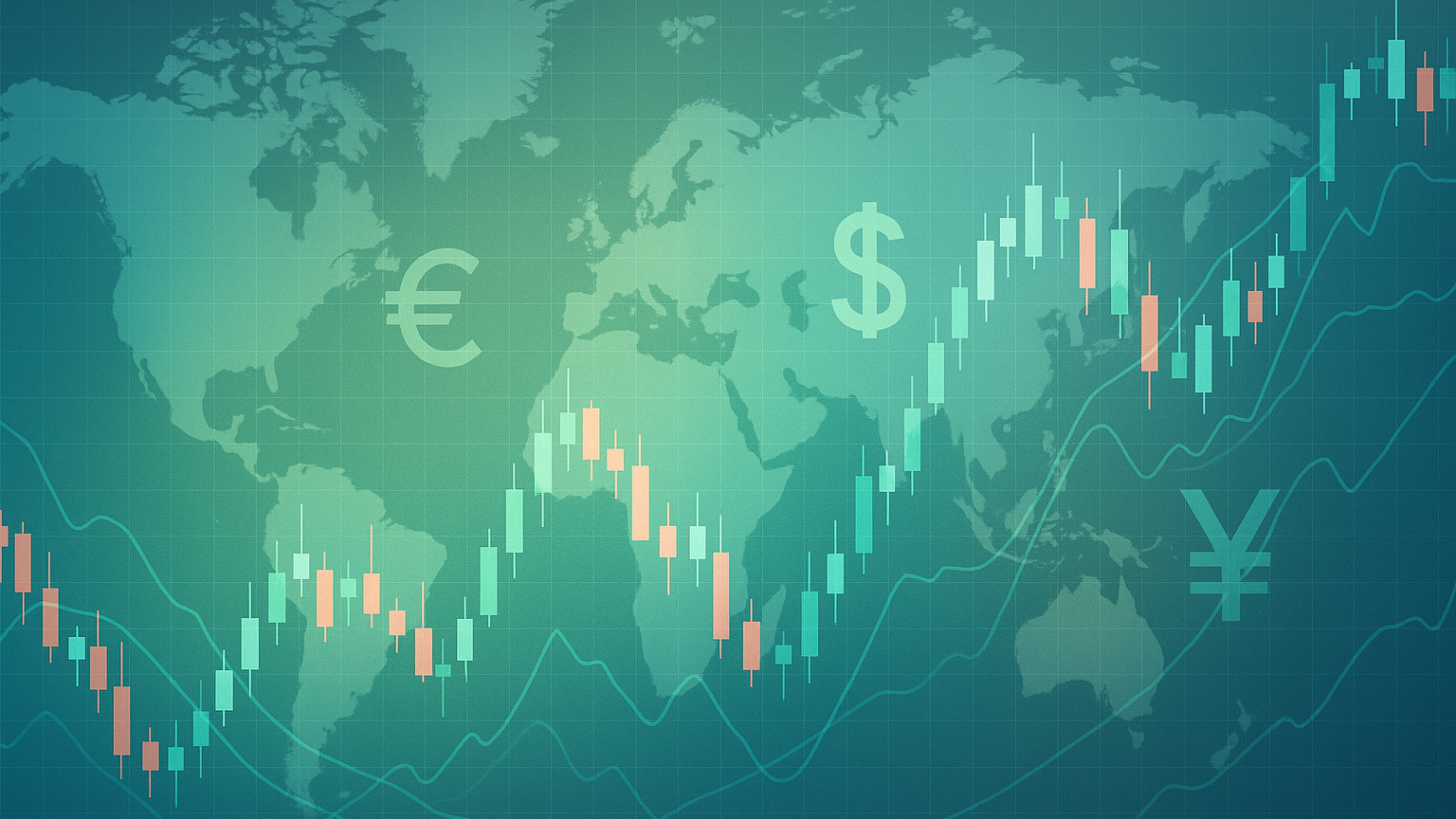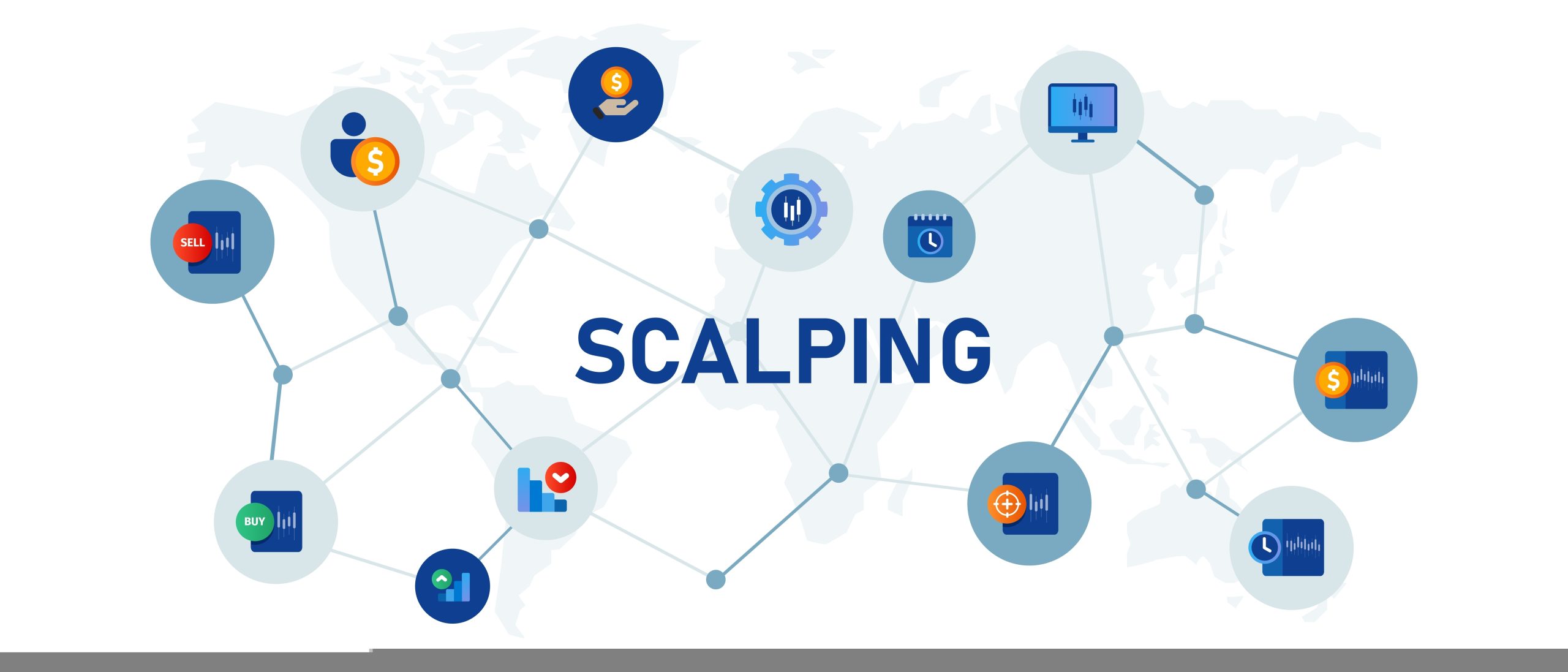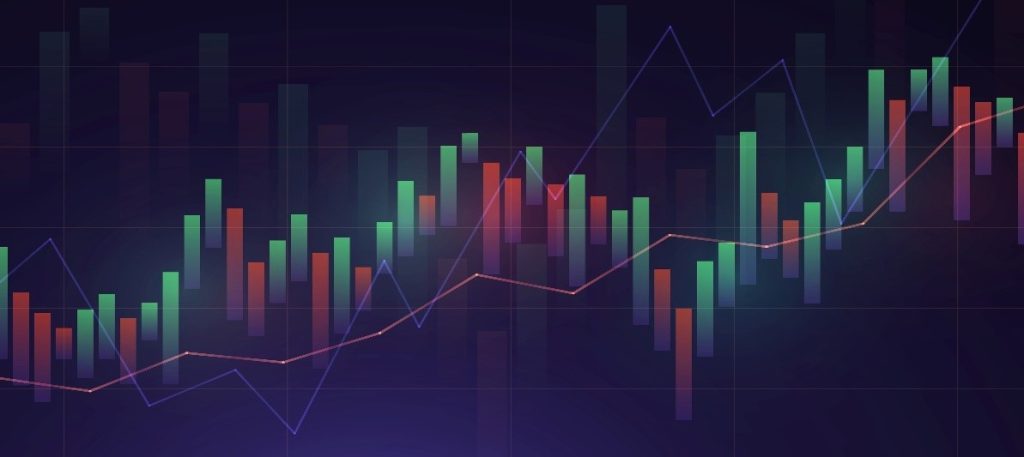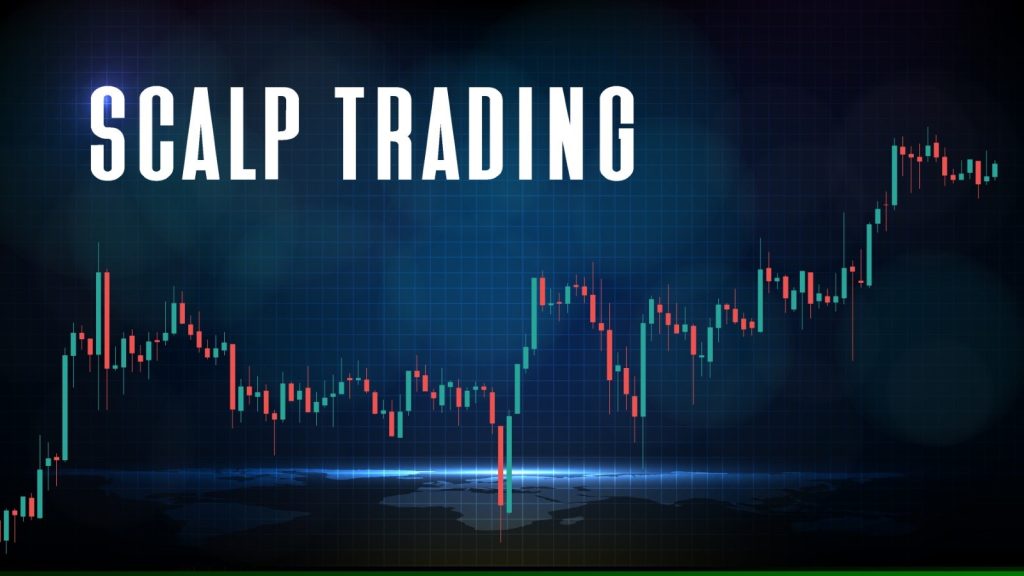Forex Trading Essentials: A Beginner’s Guide to Currency Markets

Learn the essentials of forex trading, including currency pairs, market mechanics, and risk management strategies for beginners. Forex trading is the world’s largest financial market, with over $7.5 trillion traded daily. It allows you to exchange one currency for another in a decentralized market that operates 24/5. Whether you’re a retail trader or a corporation managing international transactions, understanding the basics is key to success.
Key Takeaways:
- What is Forex? Trading currency pairs like EUR/USD, where you buy one currency and sell another.
- Market Size: $7.5 trillion daily volume, far exceeding equities markets.
- Who Trades? Central banks, commercial banks, investment funds, corporations, and retail traders.
- Benefits: High liquidity, 24/5 trading, low barriers to entry, and leverage options.
- Risks: Leverage and volatility can amplify losses; risk management is essential.
Forex trading is accessible to anyone with a laptop or smartphone, but success requires preparation. Start by learning about currency pairs, trading methods, and risk management, and practice using a demo account before diving in.
Related video from YouTube
Currency Pairs and Price Basics
To trade forex effectively, you need to grasp how currency pairs work. Each pair reflects the relationship between two currencies and serves as the foundation for all forex trades.
Reading Currency Pairs
Currency pairs are made up of two parts: the base currency (listed first) and the quote currency (listed second). For example, in EUR/USD, the euro (EUR) is the base currency, and the US dollar (USD) is the quote currency. The price shows how much of the quote currency is needed to buy one unit of the base currency.
“A currency pair involves two different currencies, often separated by a forward slash (‘/’), in which the value of the first currency is quoted against the value of the second currency.” – Blueberry Markets
When looking at forex quotes, you’ll see two prices:
- Bid price: The price at which you can sell the base currency.
- Ask price: The price at which you can buy the base currency.
For example, if EUR/USD is quoted as 1.3600/05, the bid price is 1.3600, and the ask price is 1.3605. The difference between these prices is the spread, which represents the broker’s fee.
Types of Currency Pairs
Currency pairs fall into three main categories:
| Category | Description | Popular Examples | Spread Characteristics |
|---|---|---|---|
| Major Pairs | Include the USD and are the most traded pairs | EUR/USD, USD/JPY | Tightest spreads |
| Minor Pairs | Major currencies paired without the USD | EUR/GBP, GBP/JPY | Moderate spreads |
| Exotic Pairs | Combine a major currency with an emerging market | USD/TRY, USD/SGD | Widest spreads |
The USD dominates forex trading, involved in 88.5% of transactions. The Euro and Japanese Yen follow, accounting for 30.5% and 16.7% of transactions, respectively, as of 2022. These categories are key to understanding lot sizes and leverage in forex trading.
Trading Units and Leverage
Forex trading revolves around three main lot sizes:
- Standard Lots: 100,000 units of the base currency.
- Mini Lots: 10,000 units.
- Micro Lots: 1,000 units.
A pip is the smallest price movement in forex. For most currency pairs, a pip is the fourth decimal place. For instance, if EUR/USD moves from 1.3600 to 1.3601, that’s a one-pip change.
Leverage allows traders to control larger positions with less capital. While it can amplify profits, it also increases potential losses. Choose leverage ratios carefully, considering your risk tolerance. Exotic pairs, in particular, demand caution due to their higher volatility and wider spreads. Using stop-loss orders can help manage risks when trading these pairs.
Forex Trading Mechanics

With over $7.5 trillion traded daily, understanding how to execute trades effectively is crucial.
Making a Forex Trade
Placing a forex trade involves several important steps. Your order goes through a network of liquidity providers—typically large investment banks that handle currency exchanges.
Here’s a quick breakdown of how a forex trade works:
- Trade Initiation
Your broker processes your order and sends it to liquidity providers offering competitive prices. - Order Processing
The broker’s ECN (Electronic Communication Network) system connects with these providers to secure the best available pricing. - Trade Execution
Orders are executed based on the selected execution type:- Instant Execution: Trades happen at the current price, though re-quotes might occur.
- Market Execution: Trades occur at the best available price, but slippage is possible.
“Execution involves not just the act of buying or selling, but doing so with good timing and accuracy.” – Phantom Trading
Order Types in Forex
Knowing how and when to use different order types is key to managing trades and minimizing risk. Here are the main types:
Order Type Purpose Best Used When Market Order Execute immediately at the best price You need quick entry or exit Limit Order Buy below or sell above the market price You want to control the exact price Stop Order Buy above or sell below the market price You’re looking for trend confirmation Stop Loss Automatically exit losing positions You want to manage risk effectively Trailing Stop Adjusts with price movements to lock gains You’re protecting profits during trends “Think of a limit price as a price guarantee.” – BabyPips
Trading Sessions and Times
The forex market runs 24/5, divided into global trading sessions. Each session has unique characteristics that can affect your trading strategy.
Trading Session Major Markets Peak Activity (UTC) Characteristics Asian Tokyo, Sydney 23:00–08:00 Lower volatility European London, Frankfurt 07:00–16:00 High liquidity North American New York 12:00–21:00 High volatility The overlap between the North American and European sessions is particularly active, accounting for nearly 58% of all forex trades.
Basic Trading Methods
To trade forex effectively, beginners need a clear and structured approach. Understanding the basics of market analysis and trading techniques is key.
Market Analysis Methods
Forex trading relies on two main analysis methods: fundamental and technical.
Analysis Type Focus Area Tools Used Purpose Fundamental Analysis Economic factors Economic calendars, news, indicators Identifying long-term trends Technical Analysis Price movements Charts, indicators, volume Timing entry and exit points Fundamental analysis involves keeping an eye on economic events and trends. Use economic calendars to track releases, compare actual data with market expectations, and monitor central bank decisions.
Technical analysis focuses on price patterns and charts. As BabyPips explains, “Technical analysis is NOT so much about prediction as it is about POSSIBILITY.” It helps traders find ideal entry and exit points based on historical price behavior.
Beginner Trading Techniques
For new traders, starting with straightforward strategies is a smart move. A great example is a EUR/USD breakout strategy. In one case, traders shorted the pair after a breakout at the 1.1772 support level, earning a 70‑pip profit when the price dropped to 1.1700.
“Focus on one or two strategies at a time. That way, you can use the rest of your time and energy working on your patience and discipline.” – Justin Bennett
Managing Trading Risk
Risk management is the backbone of successful forex trading. To protect your capital and improve your chances of success, follow these practices:
- Position Sizing
Keep your risk per trade to 2% of your account value. Calculate the correct lot size based on your stop‑loss distance. - Stop‑Loss Orders
Always use stop‑loss orders to limit potential losses. Aim for at least a 2:1 reward‑to‑risk ratio and consider trailing stops to lock in profits.
“Risk is inherent in every trade you take, but as long as you can measure the risk you can manage it.” – Investopedia
Starting Forex Trading
To start trading forex, you’ll need to pick a broker, select the right trading platform, and create a solid trading plan.
Selecting a Forex Broker
Picking the right broker can make or break your trading experience. Focus on factors like regulation, costs, platform options, and customer support when making your choice.
Broker Type Characteristics Best For Dealing Desk (DD) Fixed spreads, but may involve a conflict of interest New traders who prefer predictable fees ECN Direct access to the market, tight spreads, higher commissions Experienced traders aiming for precise execution STP Access to liquidity providers, balanced fees Intermediate traders seeking a mix of features Top brokers like IG Markets, OANDA, and Forex.com offer demo accounts with virtual funds, allowing you to practice without financial risk. Always verify that your broker is regulated (e.g., by the FCA or SEC) to ensure your funds are safe.
Trading Software Guide
Your trading platform is your gateway to the forex market. Tools like MetaTrader 4 (MT4) are widely used for forex trading, while MetaTrader 5 (MT5) adds support for stocks and commodities. TradingView is another popular choice, known for its social trading features and compatibility with the LuxAlgo Library indicators, exclusive toolkits (Signals & Overlays, Price Action Concepts, Oscillator Matrix), and the AI Backtesting Assistant.
Look for platforms that provide:
- Real-time price charts and analysis tools
- Mobile trading functionality
- Fast and reliable execution
- Strong security features
- Integration with third-party tools
Creating a Trading Plan
With your broker and platform ready, the next step is crafting a detailed trading plan. This plan will help you make informed decisions and reduce emotional trading.
- Choose Your Trading Style
Decide between scalping, day trading, or swing trading based on your available time and capital. - Set Clear Objectives
Define measurable goals for both short-term (daily or weekly) and long-term (monthly or yearly) trading. - Establish Risk Rules
Determine your position sizes, limit risk to no more than 2% per trade, and set daily loss limits.
Conclusion
The forex market stands as the largest financial market globally, with a staggering daily trading volume of over $7.5 trillion. Understanding its core principles is essential for anyone aiming to succeed in this space.
Key Concepts to Remember
Here’s a quick recap of the most important aspects:
Trading Aspect Key Points Market Structure Operates as a decentralized, over-the-counter (OTC) market, open 24/5. Risk Management Includes position sizing, stop‑loss orders, and managing leverage. Analysis Methods Covers technical, fundamental, and sentiment analysis approaches. Trading Tools Involves choosing the right platform, using demo accounts, and risk tools. References
- BabyPips Forex Education
- Investopedia: Forex Trading
- LuxAlgo AI Backtesting Assistant
- LuxAlgo Library of Free Indicators

Brady Young
Futures & options trader since 2016. Marketing specialist at LuxAlgo.
On this page
logo-black-1Start trading like smart money
Access the best indicators, backtesting software, and 150k+ community. Sign up
Related posts
Market Regimes Explained: Build Winning Trading Strategies
- By Christopher Downie
- •
- Aug 01, 2025
Opening Range Breakout (ORB) Trading Strategy: How it Works
- By Jacob Denbrock
- •
- Jul 22, 2025
Most Reliable Trading Patterns for New Traders
- By Jacob Denbrock
- •
- Jul 22, 2025
Directional Movement Index for Measuring Trend Power
- By Brady Young
- •
- Jul 22, 2025
logo-black-1
Start trading like smart money
Access the best indicators, backtesting software, and 150k+ community.
About
Company
Legal
Trading is risky and many will lose money in connection with trading activities. All content on this site is not intended to, and should not be, construed as financial advice. Decisions to buy, sell, hold or trade in securities, commodities and other markets involve risk and are best made based on the advice of qualified financial professionals. Past performance does not guarantee future results.
Hypothetical or Simulated performance results have certain limitations. Unlike an actual performance record, simulated results do not represent actual trading. Also, since the trades have not been executed, the results may have under-or-over compensated for the impact, if any, of certain market factors, including, but not limited to, lack of liquidity. Simulated trading programs in general are designed with the benefit of hindsight, and are based on historical information. No representation is being made that any account will or is likely to achieve profit or losses similar to those shown.
Testimonials appearing on this website may not be representative of other clients or customers and is not a guarantee of future performance or success.
As a provider of technical analysis tools for charting platforms, we do not have access to the personal trading accounts or brokerage statements of our customers. As a result, we have no reason to believe our customers perform better or worse than traders as a whole based on any content or tool we provide.
Charts used on this site are by TradingView in which the majority of our tools are built on. TradingView® is a registered trademark of TradingView, Inc. www.TradingView.com. TradingView® has no affiliation with the owner, developer, or provider of the Services described herein.
This does not represent our full Disclaimer. Please read our full disclaimer.
What Is Scalping Trading? A Beginner’s Guide to Fast Forex Profits

Scalping trading is a high-speed forex trading technique where traders execute numerous trades daily to capitalize on minor price fluctuations. Those engaged in scalping trading aim to make quick profits by holding positions for just a few seconds or minutes before closing them.
But is scalping trading an effective approach for all traders? This article breaks down what scalping in trading involves, its mechanics, and whether it aligns with different trading styles.
Understanding the Scalping Trading Strategy
The meaning of scalping trading refers to a short-term approach where traders rapidly enter and exit trades, targeting small but frequent gains. Since scalping trading in forex requires sharp execution and strategy, traders rely on real-time market data and technical analysis for decision-making.
Key features of a scalping trading strategy include:
✅ Frequent Trades: Multiple trades occur within a single trading session.
✅ Short Holding Duration: Trades may last from a few seconds to a few minutes.
✅ Small Profit Margins: Typical gains can vary, often ranging from a few to several pips per trade, depending on the strategy and market conditions.
✅ Leverage Utilization: Many scalpers use leverage to enhance returns.
✅ Technical Tools: Indicators like Bollinger Bands, RSI, and moving averages guide trading decisions.How Scalping Trading Works in Forex
To understand what scalping trading is, let’s look at an example. A trader purchases EUR/USD at 1.1050 and exits at 1.1060, securing a 10-pip gain. Though the profit per trade is minimal, scalpers execute many such trades daily, leading to substantial earnings over time.
Forex scalping strategies often incorporate strict stop-loss orders to manage risk effectively. Many scalpers use automated trading solutions, such as algorithmic trading and expert advisors (EAs), to execute trades based on predefined parameters like price action, volume, and volatility.

Best Currency Pairs for Scalping Trading
Scalping trading in forex requires high liquidity and volatility. The most commonly traded pairs for scalping include:
- EUR/USD – Euro vs. US Dollar
- USD/JPY – US Dollar vs. Japanese Yen
- GBP/USD – British Pound vs. US Dollar
- USD/CHF – US Dollar vs. Swiss Franc
- USD/CAD – US Dollar vs. Canadian Dollar
- AUD/USD – Australian Dollar vs. US Dollar
These currency pairs feature tight spreads and high market activity, making them ideal for a scalping trading strategy.
Advantages of Scalping Trading
Scalping trading offers several benefits, particularly for traders who prefer a dynamic and fast-moving trading approach.
✅ Rapid Profits: Traders capitalize on small price movements several times per day.
✅ Lower Market Risk Exposure: Short holding times reduce exposure to major price swings.
✅ Highly Liquid Market: The forex market’s liquidity ensures swift trade execution.
✅ Primarily Technical Trading: Scalpers focus on price action and technical indicators rather than fundamental analysis.Disadvantages of Scalping Trading
Despite its appeal, scalping trading presents several challenges.
❌ High Leverage Risks: While leverage can increase gains, it can also magnify losses.
❌ Increased Trading Costs: Frequent trades lead to higher spreads and commission fees.
❌ Time-Intensive: Scalping requires constant market monitoring and quick decision-making.
❌ Psychological Pressure: The fast-paced nature of scalping can be stressful and demanding.
The Risks of Leverage in Scalping Trading
Leverage amplifies a trader’s exposure by allowing them to control larger positions with a small capital investment. However, this also increases the potential downside. For instance, if a trader with a $1,000 balance uses 10:1 leverage, they control a $10,000 position. Even minor price fluctuations can trigger margin calls or liquidations, especially if stop-losses are not properly managed.
What is scalping in trading? It is a high-frequency forex trading strategy aimed at securing small but rapid profits through frequent trades. While scalping trading in forex presents exciting opportunities, it necessitates discipline, a robust strategy, and efficient risk management. Those who develop effective scalping trading strategies can leverage this approach successfully, but it may not be suitable for every trader.
For traders who thrive in a fast-moving trading environment, scalping trading can be an effective forex strategy. However, success requires patience, precision, and a deep understanding of price movements.
https://www.luxalgo.com/blog/forex-trading-essentials-a-beginners-guide-to-currency-markets/https://marketsall.com/blog/what-is-scalping-trading-a-beginners-guide-to-fast-forex-profits
